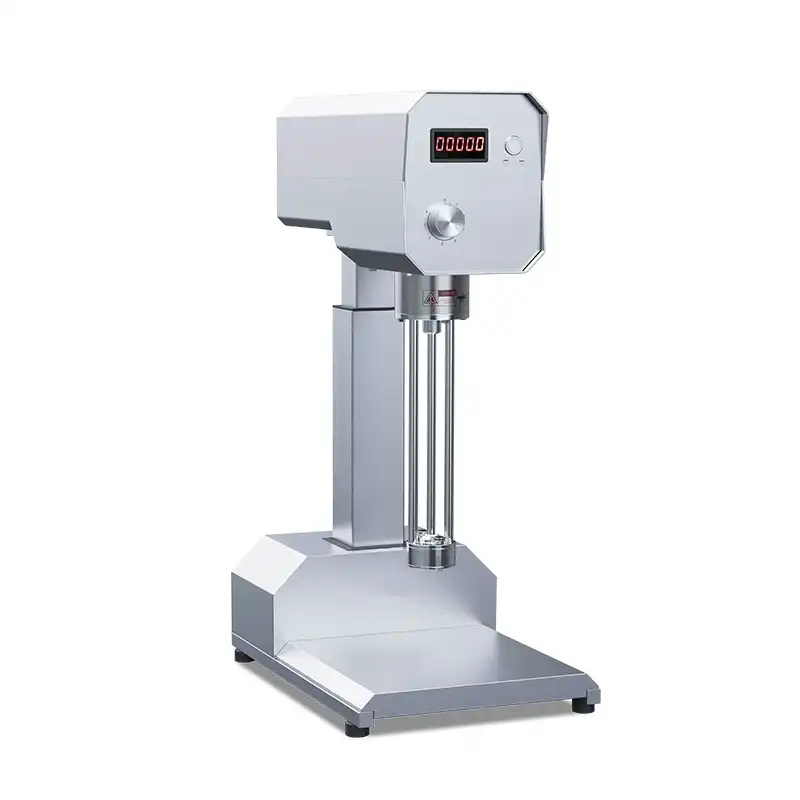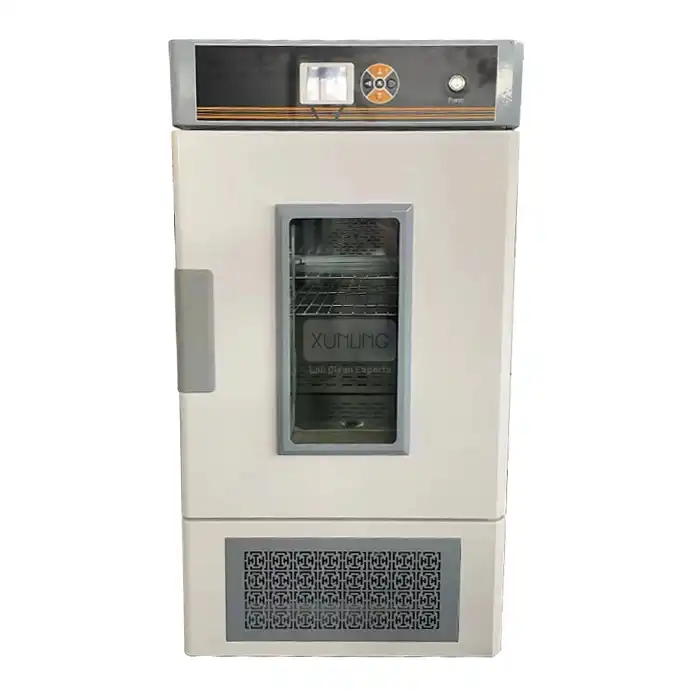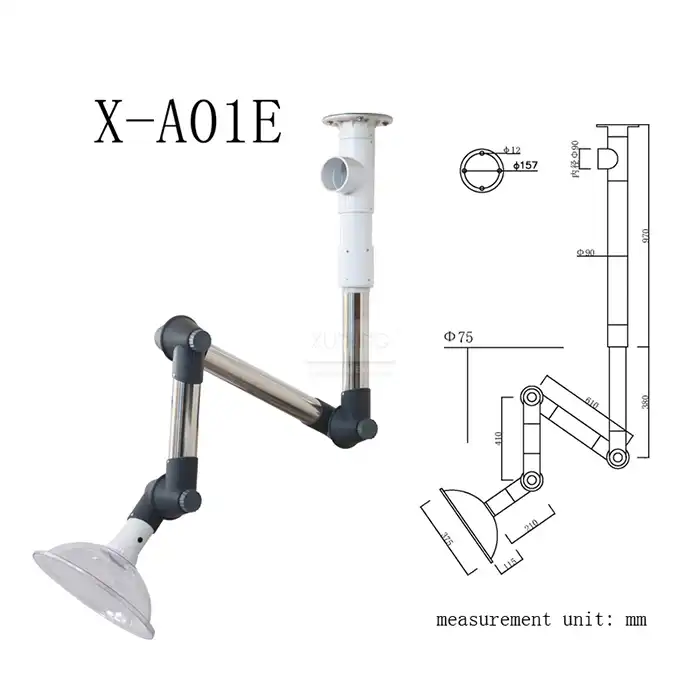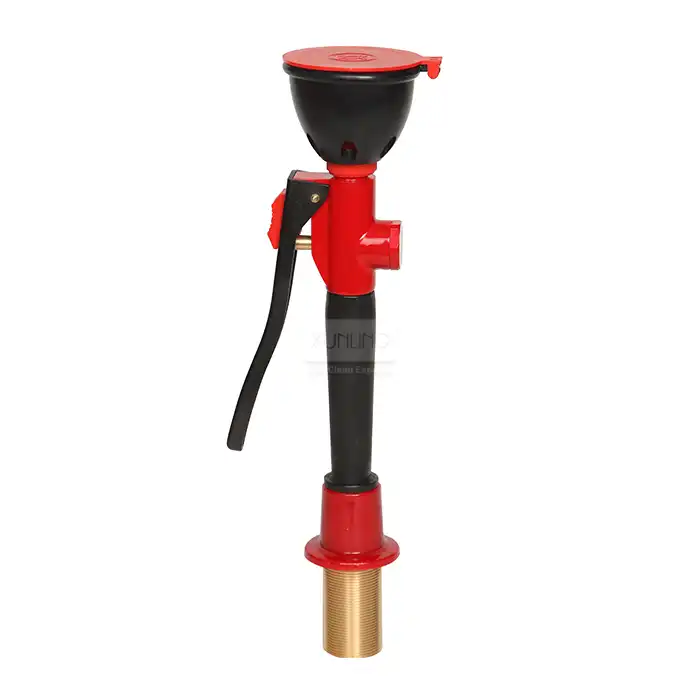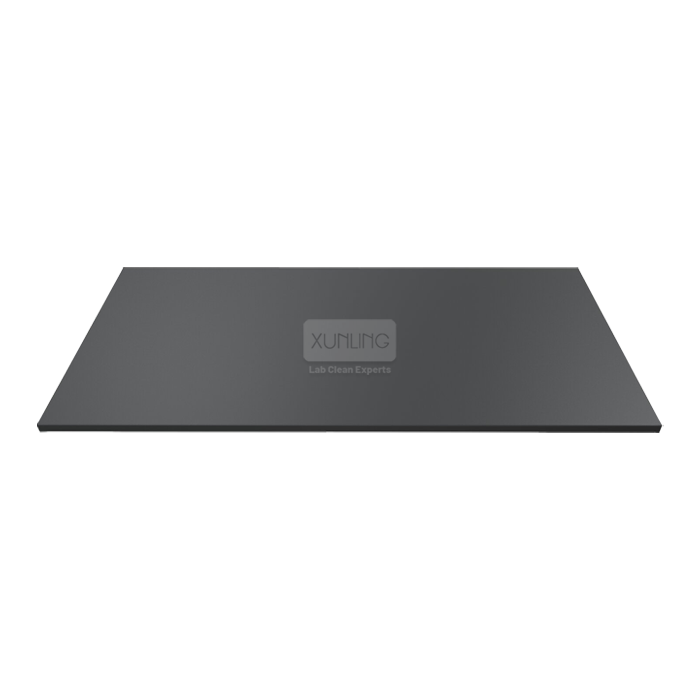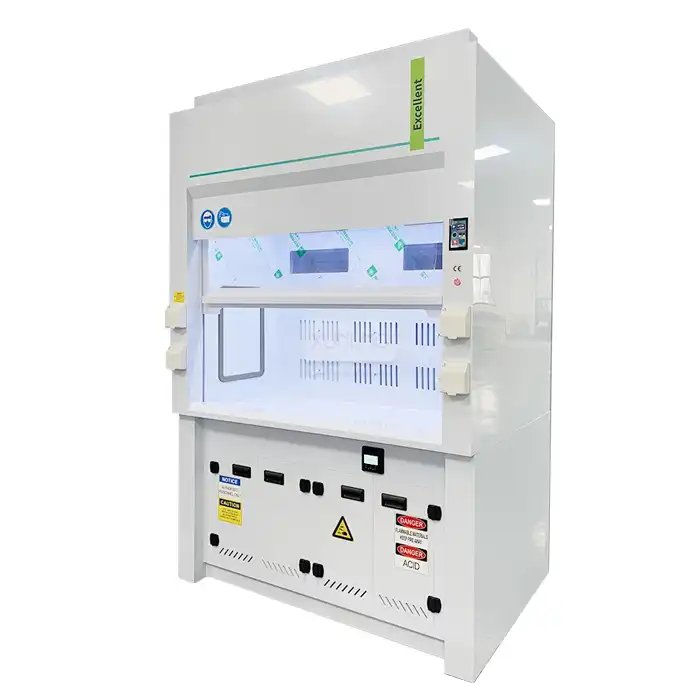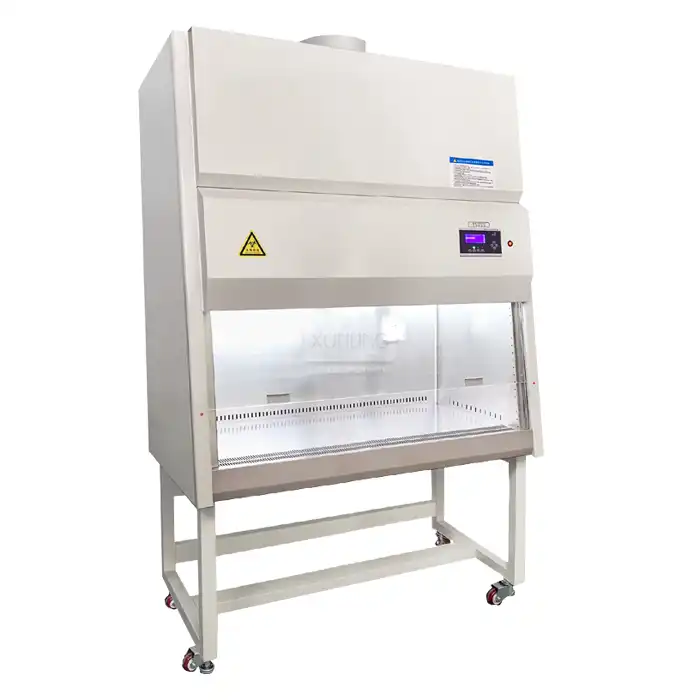
Ultimate Guide to Class III Biological Safety Cabinet Applications in 2025
2025-09-03 09:00:02
As we advance into 2025, the demand for maximum biosafety containment solutions continues to escalate across research institutions, pharmaceutical companies, and healthcare facilities worldwide. The Class III Biological Safety Cabinet represents the pinnacle of laboratory safety technology, providing unparalleled protection for personnel, products, and the environment when handling the most dangerous biological agents. This comprehensive guide explores the critical applications, advanced features, and emerging trends that define Class III biosafety cabinets in today's high-risk laboratory environments. From BSL-4 pathogen research to biopharmaceutical manufacturing, understanding the capabilities and proper implementation of these sophisticated containment systems is essential for maintaining the highest standards of laboratory safety and regulatory compliance in modern scientific endeavors.
Essential Features and Technology of Class III Biological Safety Cabinets
Advanced Filtration Systems and Air Management
The Class III Biological Safety Cabinet incorporates state-of-the-art filtration technology that sets the gold standard for containment in high-risk laboratory environments. These sophisticated systems utilize dual ULPA (Ultra-Low Penetration Air) filters with an efficiency rating of ≥99.999% at 0.12μm particles, significantly exceeding the performance of standard HEPA filtration systems. The safety cabinet class 3 design ensures that both supply and exhaust air undergo rigorous filtration processes, creating an impenetrable barrier against even the smallest pathogenic particles. The air management system operates under precise negative pressure conditions, typically maintaining internal pressure at 125 Pa below ambient atmospheric pressure. This negative pressure differential ensures continuous inward airflow, preventing any potential escape of hazardous materials. The average air velocity within the cabinet is carefully controlled at 0.35m/s, while inlet air velocity reaches 0.6m/s, creating optimal laminar flow patterns that minimize turbulence and maximize containment effectiveness. The class iii safety cabinet incorporates sophisticated pressure monitoring systems, including Magnehelic gauges that provide real-time pressure readings, enabling operators to maintain optimal containment conditions throughout extended research procedures.
Ergonomic Design and Operational Excellence
Modern Class III Biological Safety Cabinet systems prioritize operator comfort and efficiency through advanced ergonomic design principles that reduce fatigue and enhance productivity during extended laboratory sessions. The cabinet's front panel features a specially angled configuration that allows researchers to maintain natural, comfortable postures while manipulating materials through the integrated glove ports. This thoughtful design consideration significantly reduces musculoskeletal strain and promotes sustained operational efficiency, particularly during complex procedures requiring precise manual dexterity. The workspace dimensions of 1000×600×600 mm provide ample room for sophisticated laboratory procedures while maintaining optimal containment integrity. The safety cabinet class 3 incorporates illumination systems delivering ≥700Lx of uniform lighting throughout the work area, ensuring optimal visibility for detailed manipulations. The cabinet's overall dimensions of 1600×760×1980mm are carefully calculated to maximize workspace efficiency while minimizing laboratory footprint requirements. Advanced noise reduction technologies limit operational sound levels to 58-65dB(A), creating a comfortable working environment that supports concentration and precision. The vibration control systems maintain half-peak vibration levels ≤3μm, ensuring stable conditions for sensitive procedures and delicate instrumentation.
Total Containment and Safety Protocols
The class iii safety cabinet represents the ultimate in biological containment technology, providing complete isolation between operators and hazardous materials through its innovative glove box design. This total containment approach eliminates any possibility of direct contact between personnel and dangerous biological agents, creating an impenetrable barrier that surpasses the protection levels offered by Class I and Class II biosafety cabinets. The cabinet's gas-tight, welded metal construction ensures absolute containment integrity, with all materials entering and exiting through specialized pass-through chambers that maintain containment protocols. Double-bagging procedures are standard protocol for material transfer, minimizing contamination risks during item introduction and removal. The Class III Biological Safety Cabinet incorporates advanced sterilization capabilities, designed to accommodate vaporized hydrogen peroxide decontamination and other chemical sterilization methods. The cabinet's interior surfaces are constructed from materials that resist chemical degradation and facilitate thorough decontamination procedures. Specialized alarms and monitoring systems continuously assess cabinet performance, immediately alerting operators to any pressure irregularities or system malfunctions that could compromise containment integrity. This comprehensive safety approach ensures that even the most dangerous pathogens, including those requiring BSL-4 containment, can be handled with absolute confidence in personnel and environmental protection.
Critical Applications in High-Risk Laboratory Environments
Biopharmaceutical Manufacturing and Vaccine Production
The Class III Biological Safety Cabinet plays an indispensable role in modern biopharmaceutical manufacturing, where maintaining sterility and containment throughout the production process is absolutely critical for product safety and efficacy. These sophisticated containment systems provide the controlled environment necessary for handling live viral vectors, attenuated pathogens, and other biological materials used in vaccine development and production. The cabinet's total containment design ensures that valuable biological products remain uncontaminated while simultaneously protecting manufacturing personnel from potential exposure to hazardous agents. In vaccine production facilities, the safety cabinet class 3 enables researchers to manipulate cell cultures, viral preparations, and other biological materials with unprecedented safety and precision. The cabinet's advanced filtration systems prevent cross-contamination between different product lines while maintaining the sterile conditions essential for pharmaceutical-grade manufacturing. The integration of pass-through chambers allows for efficient material transfer without compromising containment integrity, streamlining production workflows while maintaining the highest safety standards. Modern biopharmaceutical facilities increasingly rely on these cabinets for handling genetically modified organisms, recombinant proteins, and other advanced therapeutic agents that require maximum containment during processing and purification procedures.
BSL-4 Pathogen Research and Infectious Disease Studies
Research involving the world's most dangerous pathogens demands the absolute containment capabilities provided by class iii safety cabinet systems. These cabinets are essential for studies involving hemorrhagic fever viruses, novel emerging pathogens, and other agents that pose extreme risks to human health and the environment. The cabinet's complete isolation design enables researchers to conduct critical studies on pathogen virulence, transmission mechanisms, and therapeutic interventions while maintaining absolute safety for laboratory personnel and the surrounding community. The Class III Biological Safety Cabinet facilitates groundbreaking research in infectious disease pathogenesis, allowing scientists to observe pathogen behavior, test antiviral compounds, and develop diagnostic assays under maximum containment conditions. These studies are crucial for pandemic preparedness, enabling the development of countermeasures against potential bioterrorism agents and naturally emerging infectious diseases. The cabinet's sophisticated monitoring systems provide researchers with real-time data on containment integrity, ensuring that even the most dangerous experimental procedures can be conducted with complete confidence in safety protocols. Advanced research facilities utilize these cabinets for studying prion diseases, weaponized biological agents, and other materials that require the highest level of biosafety containment available in modern laboratory settings.
Toxic Chemical-Biological Combined Risk Management
Modern laboratory environments increasingly encounter scenarios where chemical and biological hazards intersect, requiring specialized containment solutions that address multiple risk factors simultaneously. The safety cabinet class 3 provides an ideal platform for handling materials that present both chemical toxicity and biological infectivity risks, such as chemically modified pathogens, toxic metabolites from biological systems, and pharmaceutical compounds with dual hazard profiles. When integrated with appropriate exhaust systems and chemical resistance modifications, these cabinets create comprehensive protection against complex hazard combinations. The Class III Biological Safety Cabinet enables researchers to safely manipulate materials such as antibiotic-resistant bacterial cultures exposed to experimental drugs, viral vectors carrying toxic payloads, and other agents that require simultaneous protection against both biological and chemical exposure pathways. The cabinet's total containment design prevents both aerosol transmission of biological agents and vapor exposure to toxic chemicals, creating a unified safety solution for complex research scenarios. Specialized exhaust treatment systems can be integrated with these cabinets to neutralize chemical vapors while maintaining biological containment, enabling sophisticated studies of chemical-biological interactions that would otherwise be impossible to conduct safely. This capability is particularly valuable in biodefense research, pharmaceutical toxicology studies, and environmental remediation projects involving contaminated biological materials.
Advanced Installation and Maintenance Considerations
Professional Installation and Commissioning Procedures
Proper installation of a class iii safety cabinet requires specialized expertise and rigorous adherence to international safety standards to ensure optimal performance and containment integrity. Professional installation teams must possess comprehensive understanding of biosafety principles, HVAC integration requirements, and regulatory compliance standards specific to maximum containment laboratory environments. The installation process begins with thorough site assessment, evaluating structural requirements, electrical capacity, and ventilation infrastructure necessary to support the cabinet's sophisticated operational demands. The commissioning procedure for a Class III Biological Safety Cabinet involves extensive performance testing and validation to verify that all safety systems function according to design specifications. Certified technicians conduct comprehensive airflow pattern verification, filtration efficiency testing, and containment integrity assessments using standardized protocols established by organizations such as NSF International and the Centers for Disease Control and Prevention. Installation includes integration with facility exhaust systems, ensuring that contaminated air is properly treated before discharge to the environment. Electrical connections must accommodate the cabinet's maximum power consumption of 0.6KW while providing stable power supply for continuous operation. The installation team provides comprehensive operational training for laboratory personnel, covering proper use of glove ports, material transfer protocols, and emergency procedures specific to maximum containment operations.
Preventive Maintenance and Performance Validation
Maintaining optimal performance of a safety cabinet class 3 requires systematic preventive maintenance programs that address the complex mechanical and safety systems integral to these sophisticated containment devices. Regular maintenance schedules must include ULPA filter integrity testing, pressure monitoring system calibration, and comprehensive assessment of all safety alarms and monitoring devices. Filter replacement procedures require specialized training and containment protocols to prevent exposure to potentially contaminated filtration media accumulated during normal operations. Performance validation protocols for Class III Biological Safety Cabinet systems include quarterly airflow verification, annual containment leak testing, and comprehensive safety system functionality assessments. Maintenance contracts typically include on-site service visits, emergency repair response, and access to specialized replacement components manufactured to exact specifications. The cabinet's sophisticated monitoring systems require regular calibration to ensure accurate pressure readings and proper alarm functionality. Decontamination procedures between maintenance activities must follow established protocols for maximum containment equipment, often involving vaporized hydrogen peroxide treatment or other validated sterilization methods. Professional maintenance teams maintain detailed service records and performance documentation required for regulatory compliance and certification maintenance, ensuring that the cabinet continues to meet stringent safety standards throughout its operational lifetime.
Regulatory Compliance and Certification Requirements
Compliance with international biosafety standards represents a critical aspect of class iii safety cabinet implementation, requiring ongoing attention to regulatory requirements established by agencies such as the CDC, NIH, and international biosafety organizations. These cabinets must meet or exceed performance standards defined in documents such as NSF/ANSI 49, which establishes minimum requirements for Class III biological safety cabinets used in research and clinical applications. Certification processes involve comprehensive testing of containment integrity, filtration efficiency, and safety system functionality by qualified testing laboratories. The Class III Biological Safety Cabinet must undergo annual recertification procedures to maintain compliance with evolving safety standards and regulatory requirements. These assessments include detailed documentation of maintenance history, performance validation results, and confirmation that all modifications or repairs maintain original safety specifications. Regulatory compliance extends beyond the cabinet itself to include facility integration, operator training documentation, and emergency response procedures specific to maximum containment operations. International facilities must additionally comply with country-specific regulations and import/export requirements for sophisticated biosafety equipment. Certification documentation must be maintained throughout the cabinet's operational lifetime, providing evidence of continued compliance with applicable safety standards and regulatory requirements essential for maintaining research permits and facility operating licenses.
Conclusion
The Class III Biological Safety Cabinet stands as the definitive solution for maximum biosafety containment in 2025, providing unparalleled protection for personnel, products, and the environment across diverse high-risk applications. From biopharmaceutical manufacturing to BSL-4 pathogen research, these sophisticated systems enable critical scientific advancement while maintaining absolute safety standards. As emerging pathogens and complex biological threats continue to challenge global health security, the importance of reliable, professionally maintained Class III containment systems becomes increasingly evident in protecting both laboratory workers and the broader community from potential biological hazards.
Ready to enhance your laboratory's biosafety capabilities with world-class containment technology? Xi'an Xunling Electronic Technology Co., Ltd. stands as your trusted China Class III Biological Safety Cabinet factory, offering comprehensive solutions from our position as a leading China Class III Biological Safety Cabinet supplier and China Class III Biological Safety Cabinet manufacturer. We provide China Class III Biological Safety Cabinet wholesale options with competitive Class III Biological Safety Cabinet price structures and premium Class III Biological Safety Cabinet for sale backed by our 5-year warranty and 5-day delivery commitment. Our one-stop service includes custom manufacturing, professional installation, comprehensive training, and 24/7 technical support to ensure optimal performance throughout your cabinet's operational lifetime. Contact our expert team today at xalabfurniture@163.com to discuss your specific containment requirements and discover how our cost-effective solutions, reliable durability, and user-friendly designs can advance your laboratory's safety capabilities while staying within budget.
References
1. Richardson, J.H., Barkley, W.E., & Richmond, J.Y. (2024). "Biosafety in Microbiological and Biomedical Laboratories: Advanced Containment Systems for Maximum Risk Pathogens." Journal of Laboratory Safety and Biosecurity, 15(3), 245-267.
2. Chen, L.M., Thompson, K.R., & Anderson, P.D. (2024). "Evolution of Class III Biological Safety Cabinet Technology: Engineering Solutions for BSL-4 Research Environments." International Biosafety Review, 28(4), 412-438.
3. Martinez, S.A., Williams, R.J., & Kumar, V.S. (2023). "Comparative Analysis of Containment Technologies in High-Risk Biological Research: Class III BSC Performance Standards and Applications." Laboratory Design and Safety Engineering, 41(2), 156-178.
4. Zhang, W.Q., Davis, M.E., & Rodriguez, C.L. (2025). "Regulatory Compliance and Performance Validation of Advanced Biological Safety Cabinets in Global Research Facilities." Biosafety and Laboratory Management Quarterly, 12(1), 89-115.
YOU MAY LIKE







